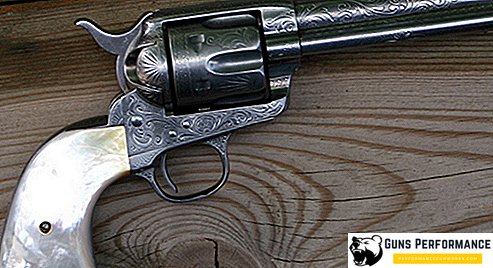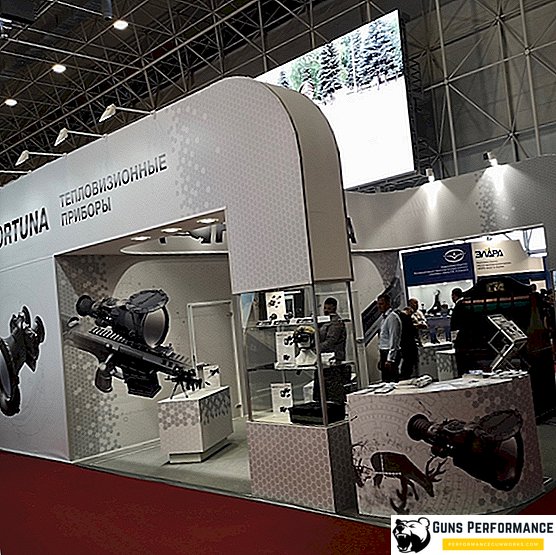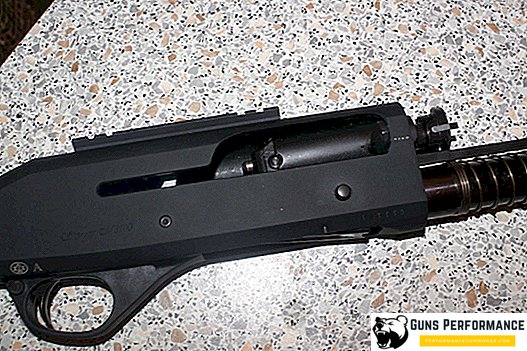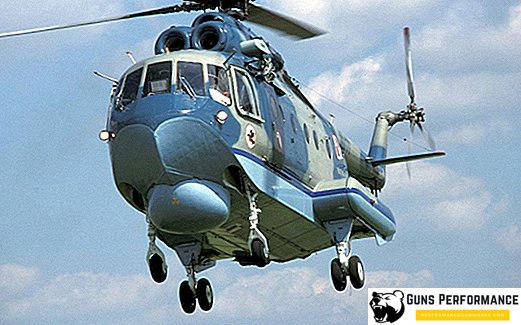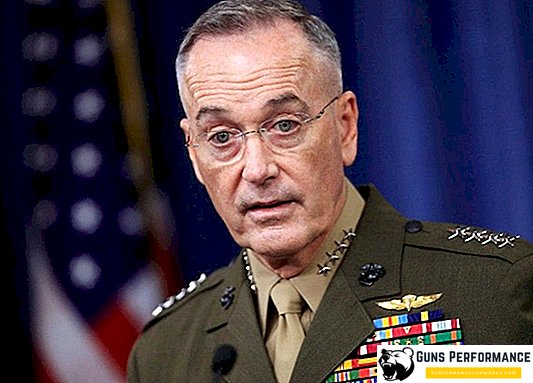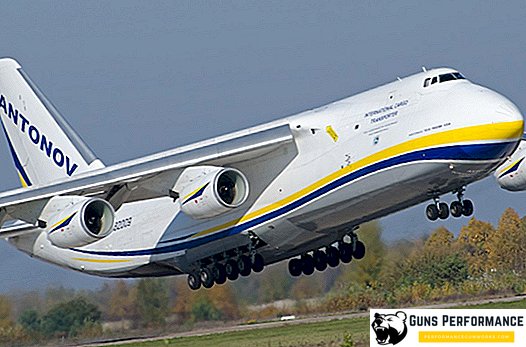The position of president in Indonesia was introduced immediately after the end of the Second World War, when the country was able to gain independence. The first head of the republic was Sukarno, who was elected simultaneously with the vice-president Mohammad Hatta. Initially, the president had almost unlimited power, as he was not only the head of state, but also the government. On November 14, 1945, the post of Prime Minister was introduced in the country, due to which the power of the head of state ceased to be absolute. Currently, the post of President of Indonesia is held by Joko Widodo, who was elected in 2014.
Pre-colonial period of development of Indonesia
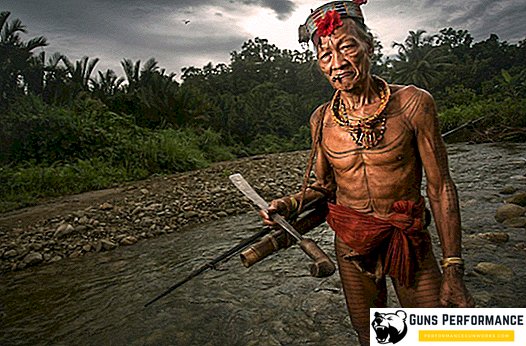
The first information about the states located on the islands of Java, Sumatra and Kalimantan, refers to the VI century AD. e. Their further development was as follows:
- In the 7th century, the empire of Srivijaya was formed from several Sumatran principalities;
- In the second half of the 8th century, she was able to firmly consolidate her position on the Malacca Peninsula;
- At the beginning of the 8th century, the state of Mataram arose on the central lands of Java;
- Towards the 10th century, Srivijaya reached its peak. The main religion at the time was Buddhism;
- The year 1025 was a turning point in the history of the kingdom: it suffered a crushing defeat in the fight against the Indian state of Cholu. This war began for influence over the trade routes in the region. After the defeat, the centers of political and economic life were moved to Java;
- In the XI century, the main task of the Kingdom of Mataram was to unite the cities and regions of Java under their leadership. By the middle of the XI century, they succeeded, and the island of Bali was also captured.
After that, Mataram split into 2 states, the strongest of which was Kediri.
In the XII century, the following lands became part of the kingdom of Kediri:
- Bali;
- Java;
- Madura;
- Moluccas.
Unfortunately, the struggle between the ruling elite in the country led to the emergence of the Sinasari state in the 13th century. It reached the peak of its development under Maharaj Kertanagar, who ruled from 1268 to 1292. The territory of Singasari expanded significantly:
- Control was established over much of Sumatra;
- In submission was the south of the Malacca Peninsula and the western part of Kalimantan.
Despite its military successes, the activity of the Maharajah Kertanagar did not like the local nobility. Taking advantage of the lack of troops, they captured the capital of the kingdom, killing their ruler.
The place of Sinasari was occupied by the empire of Majapahit, which ruled on these lands from 1293 to 1520. This most powerful Javanese state is considered the strongest in medieval Indonesia. The country developed rapidly, reaching the following successes:
- Trade began to increase volumes;
- Cultural ties have been established with other regions;
- Indonesia united around Java, as it supplied all the rice.
The most famous ruler of the medieval state was Gadjah Mada, who ruled the country from 1331 to 1364 years. It was he who completed the construction of the Indonesian Empire.
Towards the end of the 14th century, the country began to decline. This was due to the following events:
- The hereditary crisis of the XV century;
- The depletion of the royal treasury associated with the competition of the Malacca trading network;
- The penetration of Islam.
All these reasons led to the disintegration of the state into Muslim principalities. By the 16th century, on one island of Java there were two states - Mataram and Bantam.
Capture of Indonesia by Europeans and the Further Colonial Period

The first Europeans, in addition to the merchants who occasionally visited the country with their caravans, were the Portuguese. They played an important role in the development of Indonesia. In 1511, the conquistadors captured Malacca and the coastal villages on the islands. They established full control over the export of spices and other exotic goods by sea. Despite the military achievements, the Portuguese could not establish their power in the region, as there were too few of them. Europeans constantly had to maneuver between the local principalities, entering into military and economic alliances.
At the end of the XVI century, Dutch sailors began to penetrate into Indonesia. After this began the conquest of the region by Holland:
- Thanks to a decree in 1602, the United Netherlands East India Company was formed;
- Soon she was able to expel the Portuguese from the Moluccas;
- In 1619, the first Dutch fort Batavia was built;
- In 1619 the English fleet was defeated in the Gulf of Thailand, which also claimed dominance in the region;
- In 1641, the Dutch were able to capture the Portuguese Malacca.
Unlike the Portuguese, the Dutch did not seize the territory of Indonesia. They were able to impose their trade treaties on the native rulers and tightly controlled all international relations with other European countries. In order to protect trade as much as possible from encroachment, in 1659 the Dutch burned the port of Palembang, located in Sumatra.
In 1749, the Dutch East India Company entered into an agreement according to which it gained full sovereignty over the sultanate of Mataram. However, control over Central Java brought the company huge losses. The war of Holland and England in the years 1780-1784 bankrupt the East India Company. In 1799 she became a complete bankrupt, and her property was transferred to the state.
As a result of the European Napoleonic Wars, Indonesia for a short time became a colony of France. Power in the country received Marshal Dundels, who became governor. The local ruling elite did not accept the new French leadership, as a result of which uprisings began to flare up throughout the region. The French government began to systematically destroy the local government system.
In 1811, the British drove the French out of Indonesia. The new governor was Stamford Raffles. He continued the policy of suppressing the local aristocracy, begun by the French. Further events were a surprise for the English governor:
- In 1816, Java returned to the Dutch;
- In 1824, a document was signed, according to which Southeast Asia was divided between England and Holland;
- Virtually the whole of Indonesia, except for the Aceh Sultanate, became a Netherlands colony.
Despite the fact that the bourgeoisie demanded free trade in the colonies, the state returned to monopoly policy.
In 1825-1830, an uprising broke out in Java, led by Prince Diponegoro. The government hardly crushed the war, forcing local rulers to reconcile. After that, the Netherlands began a series of wars of conquest to capture the entire region:
- In 1855, the invaders gained control of western Kalimantan;
- In 1856, Lombok was conquered;
- By 1858, almost all of Sumatra was captured.
The Sultanate of Aceh resisted the longest. The war with him lasted for 30 years. Only by 1903 the Dutch managed to establish their power there.
The struggle for the independence of Indonesia

Only at the beginning of the 20th century, Indonesians were inspired by European ideas of the struggle for independence. After the outbreak of the First World War, the power of the Dutch in the country weakened. Then the government hurried to carry out reforms that were supposed to defuse the unstable political situation. In 1916, the Dutch Parliament established the Colonial Council. Despite this, the workers' movements, founded in 1914 by the Indian Social Democratic Union (IDO), began to fight against the colonialists. By 1918, they had their cells in all major cities of the country.
May 1, 1918 May Day demonstrations. After this, the Indian Social Democratic Union began to influence the trade unions:
- Port workers and sailors;
- Railway workers;
- Chauffeurs;
- Tailors;
- Oil industry and other.
The total number of members of the ISTO was more than 60 thousand people. In 1920, the workers' union was renamed the Communist Party of Indonesia. Leaders have led the national liberation movement. Tellingly, Muslim organizations, which also fought for independence, often joined the communists in strikes and strikes.
In 1925, a wave of workers' strikes broke out across the country, and a year later the strikes escalated into armed clashes with the Dutch authorities. All protests were brutally suppressed, and the Communist Party of Indonesia became an illegal organization. Due to the fact that the Communists were defeated in the fight, new parties began to appear. The strongest of them is the National Party of Indonesia, which emerged in 1927. The main initiator of the creation is the engineer Sukarno, who studied in Holland.
In 1929, this party became weighty in the domestic political arena. Sensing his strength, the leader of the movement made a proposal to completely abandon any cooperation with the authorities of the country. Immediately afterwards, a series of arrests followed. Sukarno and all the leaders of the National Party of Indonesia were arrested, and the organization was dissolved in 1930. Since the Netherlands refused to implement management reforms, this brought together all Indonesian parties. In 1937, a new strong organization appeared - the Indonesian People's Movement. She tried to force the authorities to go for reforms, in return, offering her help in the fight against the fascist bloc. The government did not want to make concessions, so all proposals were rejected.
In 1942, Japanese troops occupied Indonesia. This brought the country its drawbacks and advantages:
- The activities of all political parties were banned;
- Folksraad was dissolved;
- The population was involved in forced labor;
- Administrative posts began to occupy the indigenous people of Indonesia;
- The leaders of the independence movement, who were arrested under the Dutch, were released from prison.
Since by the end of the war Japan needed more and more resources, the authorities promised Indonesians independence.
Indonesia after World War II

Immediately after Japan announced its surrender, the country actually became independent. Until the Dutch returned to power, Sukarno and Hatta were quick to proclaim Indonesia an independent republic. Having recovered from the consequences of the war, the Dutch troops began fighting against the country in 1947, wishing to extend their years of government by another several decades. The war lasted until 1949, after which the invaders were forced to leave Indonesia alone: the United Nations and the United States insisted on it.
In 1950, an independent Republic of Indonesia was proclaimed, headed by President Sukarno. In the same year, the Constitution was adopted, which clearly indicated how the government will be managed:
- Executive power is vested in the government;
- Parliament should oversee the work of the government;
- The president has limited powers.
In 1950, Indonesia became part of the UN. Naturally, the head of state did not like that his rights were severely limited.
In 1959, Sukarno abolished the 1950 Constitution and declared that the country would live by the 1945 constitutional acts. To prevent attempts by the opposition to intervene, the president used the army. This situation continued until 1965, during which time a coup attempt was averted. The Communists were accused of everything, after which mass arrests and shootings began. Despite the fact that Sukarno was elected for several terms in a row, and in 1963 declared himself president for life, he could not cope with the army led by General Suharto. On March 12, 1966, power in Indonesia officially passed to the new government, headed by Suharto. In 1968, the general became the second president of the country.
The new head of Indonesia, despite the fact that the rules are quite authoritarian, was able to achieve some success:
- The difficult economic situation in the country has stabilized;
- Foreign-owned production began to appear in Indonesia;
- The World Bank and the International Monetary Fund have begun to allocate funds for the development of Indonesia.
In the late 1960s, an oil boom began, which favorably affected the republic's economy. Despite all the advantages of Suharto's rule, separatist movements began to emerge in the country, the main purpose of which was to overthrow military power.
The second half of the 1990s was a disaster for the government:
- The economic crisis has led to the fact that about 4 million people have lost jobs;
- There was a devaluation of the national currency;
- Prices for food and essential goods increased several times;
- Rallies and demonstrations began, which the government tried to suppress.
As a result of armed clashes with the opposition, more than 12 thousand people died. Suharto lost his influence and was forced to resign. After the president became Habibi, who served as vice president.
Indonesia and its development in the new time

Although the new head of the republic was not elected by popular vote, he announced that he would radically change the policies of his predecessor. The government of Habibi managed to stabilize the situation in the country:
- The ban on the formation of new parties was lifted;
- The media have lost their "sensitive" state control;
- It was announced that the presidential and parliamentary elections will be held on time and will be fair.
We must pay tribute to Habibi: he fulfilled his obligations. The third permanent president of Indonesia was Abdurrahian Wahid, whose inauguration was held in 1999.
The new head of the republic could not cope with the economic and national problems that occurred throughout Indonesia. In 2001 there was a serious conflict between the Dayak and the Madurian, as a result of which thousands of people were forced to relocate. Abdurrahman Vahid tried to enter into conflict with the government, but the army did not support. In the same year, the president was impeached. Megawati Sukarnoputri (daughter of Sukarno, the first head of the republic) won the next election.
The Sukarnoputri government also failed to cope with radical Islamic groups (they constantly organized terrorist acts). As a result, the people did not support the president in the 2004 popular elections. Susilo Bambang Yudoyono, who gained more than 60% of the vote, became the new head of the republic. He managed to stay in power for two consecutive terms. In 2006, Aceh became an autonomous province, which made it possible to partially get rid of the Islamists.
In October 2014, Joko Vidodo was elected president. He is in this position so far.
Status and Responsibilities of the President of Indonesia

Features of the executive in Indonesia are as follows:
- A republic is ruled by a government headed by a president;
- Vice President elected to assist the head of state;
- Since 2004, these posts can only be taken as a result of universal direct voting;
- The ruler of Indonesia and his assistant are elected for 5 years, while there is an opportunity once to go for a second term.
Although it is not stipulated in the constitution, the presidential decrees have the power of legislative acts.
As for the direct responsibilities of the head of state, he has the following powers:
- He is the Supreme Commander of the Armed Forces of the country;
- Gives to the Council of People’s Representatives various bills;
- Approves government regulations;
- May declare war or conclude peace treaties;
- Supervises the country with the help of his decrees, if necessary;
- In case of danger, introduces a state of emergency;
- May declare amnesties and pardon criminals;
- Appoints and dismisses ministers and consuls;
- Presents government awards and insignia.
Although the President of Indonesia has broad powers, he cannot dissolve the legislature. Since 2004, the country, in addition to the head of state and his deputy, has been governed by the Cabinet of United Indonesia.
Residence of the President of Indonesia

Presidential Palace is located in Jakarta. Its name translates as "Palace of Freedom" (Istana Merdeka sounds in Indonesian). Он был построено голландцами в 1876 году. После обретения страной независимости дворец несколько раз реставрировался и перестраивался. Рядом возведена группа зданий, в которых расположены государственные учреждения. Сейчас дворец президента является символом независимости Индонезии. В нём проходят следующие мероприятия:
- Банкеты;
- Официальные приёмы;
- Встречи министров;
- Conference.
Приёмная президента тоже расположена во Дворце свободы. Вся территория открыта для посещения.


